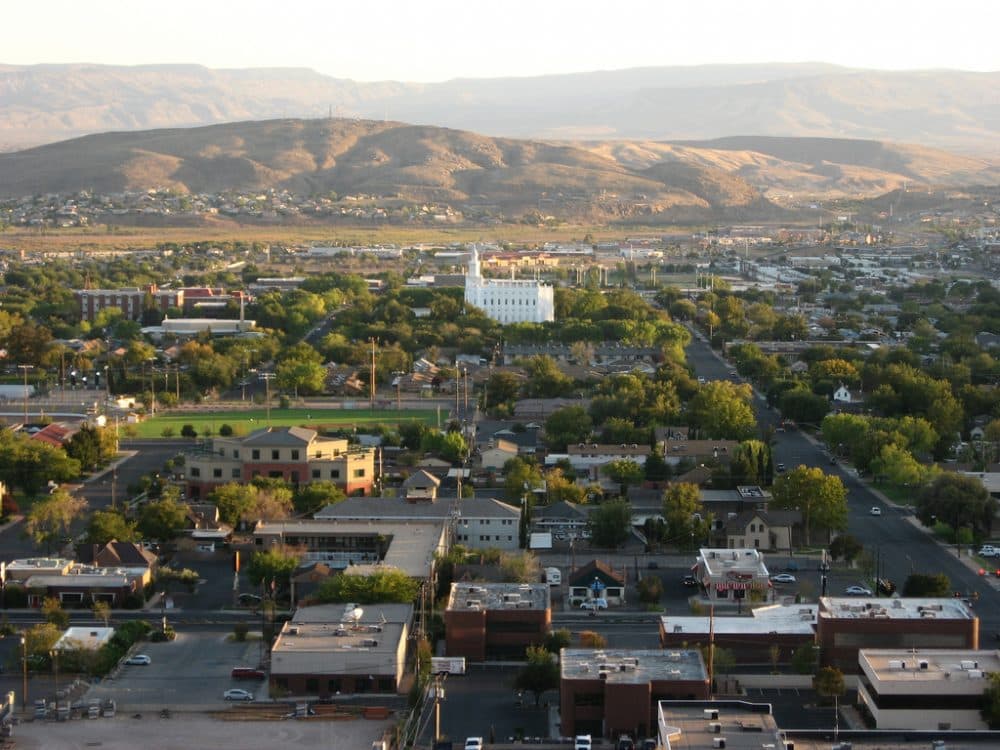Advertisement
Utah City Is The Nation's Fastest-Growing Metropolitan Area

St. George, Utah, is the fastest-growing metropolitan area in the country, according to new data from the Census Bureau. The city is nestled into the southwest corner of the state, and the metro area grew by about 4 percent last year.
Here & Now's Peter O'Dowd talks with Pam Perlich, director of demographic research at the University of Utah.
Interview Highlights
On what St. George is like
"I've heard it referred to as sort of the 'Palm Springs of Utah.' It has a climate that is just superb for wintertime, especially. It's within a stone's throw of Zion National Park, you get towering red rock and beautiful canyons, with that low humidity and beautiful desert environment. It has a really high quality of life. Housing is still reasonable, as far as the cost of housing. It's a small enough place that you don't feel like you're overwhelmed in a large city."
"In our state projections, we see that Washington County is gonna triple in size in the next 50 years, surpassing half a million people."
Pam Perlich
On the city's recent reputation for growth
"We were accustomed to seeing the St. George metro area designated as among the fastest-growing metro areas up until the financial crisis hit. That area of the state was hit with more overbuilding. It was much more like the housing market's got in [Las] Vegas, or if you look down into the Phoenix area, so it was part of that growth dynamic that led up to the speculative financial bubble. Then there was the crash and the Great Recession, 2010 were the depths of the recession and then as we started digging out of that, migration began to increase again. But what we've seen, particularly in the last three years, is a lot of the migration patterns and flows that we saw pre-Great Recession are beginning to re-establish themselves, albeit at a slower pace both relatively and absolutely."
On who's moving there
"Well there are a variety of people moving in, but it is disproportionately a retirement destination. So you're seeing what they're calling 'the young elderly' — those are people who are able to leave the labor market, say, 55 years old or so, moving there with independent income and wealth. But then you're also seeing the streams of people who are already old enough to receive Medicare, they're showing up in the Medicare records.
"We also have some industry establishing itself there. Tourism is a mainstay of the Washington County economy. It's a big second home, vacation home community. That's part of the challenge of estimating the population there and understanding how much infrastructure and services are needed, because on any given night, 20 percent of the occupied housing units are occupied by people who are not even showing up in the numbers that we're talking about."
On strain the growth is putting on infrastructure
"Water is the big constraint down there. In our state projections, we see that Washington County is gonna triple in size in the next 50 years, surpassing half a million people — that really will fundamentally change the character of the place and put enormous pressure on infrastructure."
This segment aired on March 26, 2018.